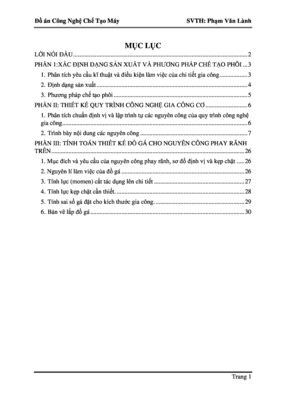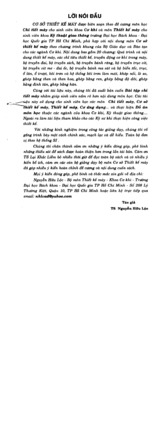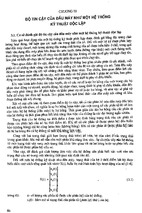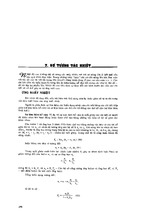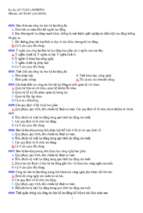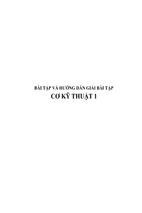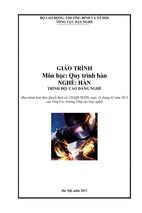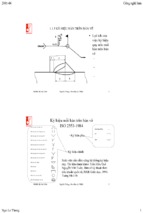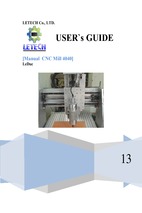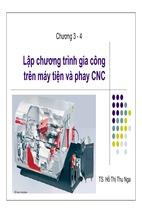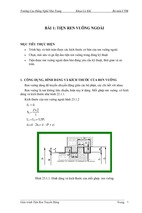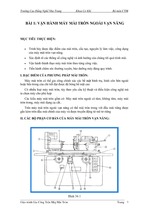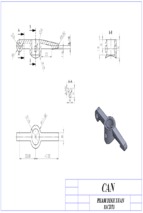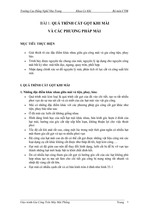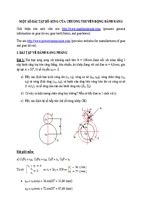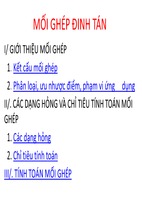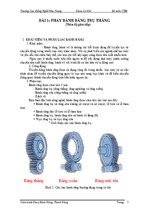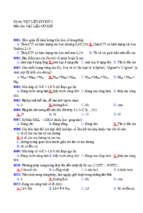Mô tả:
PART 1 CNC BASICS
OBJECTIVES:
1. Recognize the importance of Safety when working with CNC Machines.
2. Become familiar with Tool and Word holding methods for CNC Machining.
3. Learn how to calculate proper Feeds and Speeds for CNC Machining.
4. Learn how to plan for CNC programming by using Process Planning Documents.
5. Become familiar with Coordinate Systems and their use in CNC Programming.
6. Learn terminology and acronyms associated with the CNC Basis.
7. To learn the ABC’s of program format.
STUDY QUESTIONS
1. Programming is a method of defining tool movements through the application of
numbers and corresponding coded letter symbols.
T or F
2. A lathe has the following axes:
a.
X, Y & Z
b.
X & Y only
c.
X & Z only
d.
Y & Z only
3. Program coordinates that are based on a fixed origin are called:
a.
Incremental
b.
Absolute
c.
Relative
d.
Polar
4. On a two axis turning center the diameter controlling axis is:
a.
B
b.
A
c.
X
d.
Z
1
5. The letter addresses used to identify axes of rotation are:
a.
U, V & W
b.
X, Y & Z
c.
A, Z & X
d.
A, B & C
6. The acronym TLO stands for:
a.
Tool Length Offsets
b.
Total Length Offsets
c.
Taper Length Offsets
d.
Time Length Offsets
7. When referring to the polar coordinate system, the clockwise rotation direction has a
positive value
T or F
8. In Figure 15 of Part 1, which quadrant is the part placed in?
9. A program block is a single line of code followed by an end-of-block character
T or F
10. Each block contains one or more program words
T or F
11. Using figure 13 in Part 1,
list the X and Y absolute
coordinates
profile
for
where
the
part
Workpiece
Zero is at the upper left
corner. (The corner cutoff is
at a 450 angle).
Figure 13 Three-Dimensional
Coordinate System
12. Using figure 13 in Part 1, list the X and Y incremental coordinates for the part profile
where Workpiece Zero is at the upper left corner.
13. How often should the machine lubrication levels be checked?
2
- Xem thêm -


